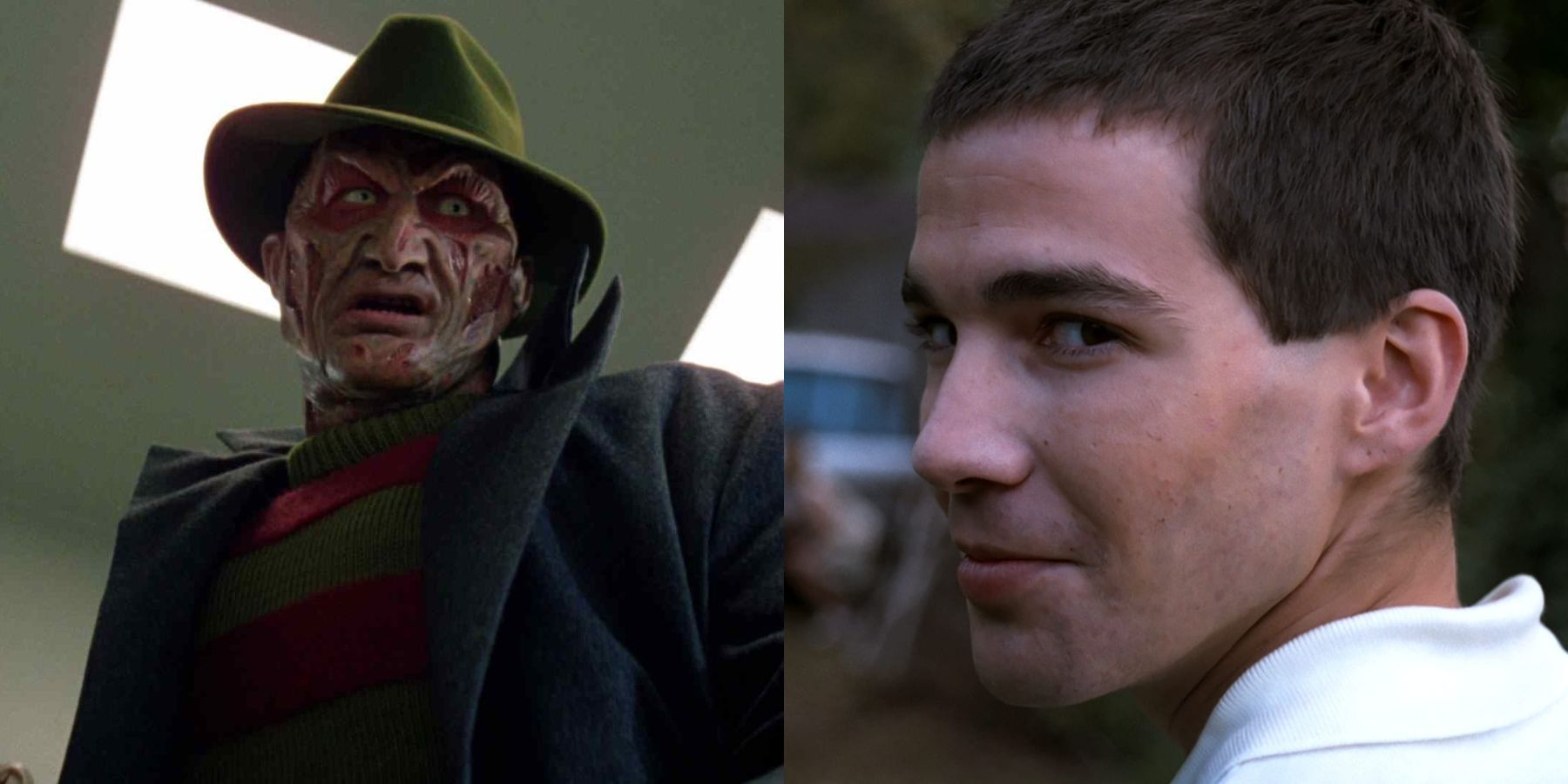Breaking the fourth wall is a common narrative device where an actor, still in character, addresses the audience or references the fact that they are inside a fictional story; however, it is mainly used in comedies, with the most known examples including Ferris Bueller's Day Off, Wayne's World, Annie Hall, Monty Python And The Holy Grail, and, of course, Deadpool. While horror movies often rely on the viewers fully emerging in the story to achieve the maximum scare factor, some still break the fourth wall and include the audience, often making the experience all the more terrifying.
This narrative device originally comes from theater, where the audience is the fourth wall, with the other three being the ones that compose the stage — the use of this technique is meant to shake up the viewers, add a playful element and a source of timely humor, and remind them not to take the whole thing too seriously. However, these horror movies break the fourth wall for the opposite effect, implying that the audience is not excluded from the consequences of whatever is happening on screen. These are the best examples of such films.
The Woman in Black (2012)
James Watkins' gothic horror revolves around the story of Arthur Kipps (Daniel Radcliffe), a young layer in early 20th-century England, who travels to an isolated and desolate mansion to retrieve documents needed for a real estate deal, only to discover that it is haunted by a ghost of a veiled woman, who lures children to their deaths. The movie is eerie, dark, and has a fake intermediate happy ending, similar to A Nightmare on Elm Street or The Conjuring franchises, where the seemingly vanquished villain has not been defeated after all.
In the very last scene, the woman in black looks straight in the camera, suggesting that she's aware of the audience's presence and is coming for them next. The effect is deeply unsettling, making this instance of breaking the fourth wall chillingly effective, despite being brief.
The Ring (2002)
This American remake of the 1998 Japanese horror Ringu, while considered by some fans inferior to the original, still has the same unnerving premise — anyone who sees the creepy videotape of the girl crawling out of a well dies within seven days. While the film's main protagonist, a journalist Rachel Keller (Naomi Watts), discovers the grizzly truth behind the ghostly girl's murderous tendencies, which in theory should have averted the curse, she realizes that the only reason she wasn't murdered like the others is the fact she made a copy of the tape, ensuring that other people will see it and fall victims to Samara's vengeance.
While The Ring doesn't technically break the fourth wall, the suggestion that the audience has just seen that very same cursed tape and, therefore, might become the apparitions' next victim is deeply unsettling and keeps the viewers somewhat tense for the next seven days.
Wes Craven's New Nightmare (1994)
The mind behind Scream and A Nightmare on Elm Street franchises, Wes Craven, is the master of slasher horror and is arguably among the best for breaking the fourth wall. In Wes Craven's New Nightmare, he explores the idea of Freddy Krueger realizing that he's a fictional character and going after the cast and crew members involved in the making of the films about him in 'real-life.' Among others, Freddy attacks his creator, Wes Craven himself, the actor who plays him, and the actress who portrayed Nancy Thomspon, Freddy's nemesis from the original movie.
While the concept of the characters' sudden self-awareness is often used for comedic effect — for example, when Winchester brothers in Supernatural made fun of the actors who are playing them in a parallel universe — in this meta slasher, Freddy is much less comical and is deadset on revenge, taking the audience along for one scary ride.
Funny Games (1997)
This Austrian home invasion horror (as well as its shot-for-shot 2007 American remake) shows two well-spoken young men breaking into a vacation home and taking a family hostage to force them to play several twisted games. One of the killers, Paul, repeatedly looks straight at the camera and guesses the audience's feelings about the film, wondering what would make them continue watching such a violent and sadistic piece. At one crucial point, he outright rewinds the scene of the family finally overwhelming and killing his partner, therefore, erasing their small victory.
Funny Games' masterful and utter fourth-wall-breaking leaves the audience feeling just as helpless as the tortured family and makes them take a hard look at themselves, as well as the society's desensitized attitude towards violence in general.
The Cabin in the Woods (2011)
This self-aware horror-comedy from the masters of the genre, Drew Goddard and Joss Whedon, is an unapologetic and purposeful collection of the slasher tropes — from a group of young people going to a remote location to them suddenly assuming the archetypical horror roles to the curse that they unleash on themselves. The movie features countless references to Evil Dead, The X-Files, The Hills Have Eyes, Halloween, and pretty much every haunted house, serial killer, zombie, and monster horror movie out there.
Marty (Fran Kranz) is the first to recognize the standard tropes and point them out to the group, suggesting they might be part of a horror movie. While the final twist turns his theory upside-down, the sheer amount of subverted stereotypes and on-the-nose references make The Cabin in the Woods one of the most fourth-wall-breaking movies out there, all the while, technically, never crossing that line.






